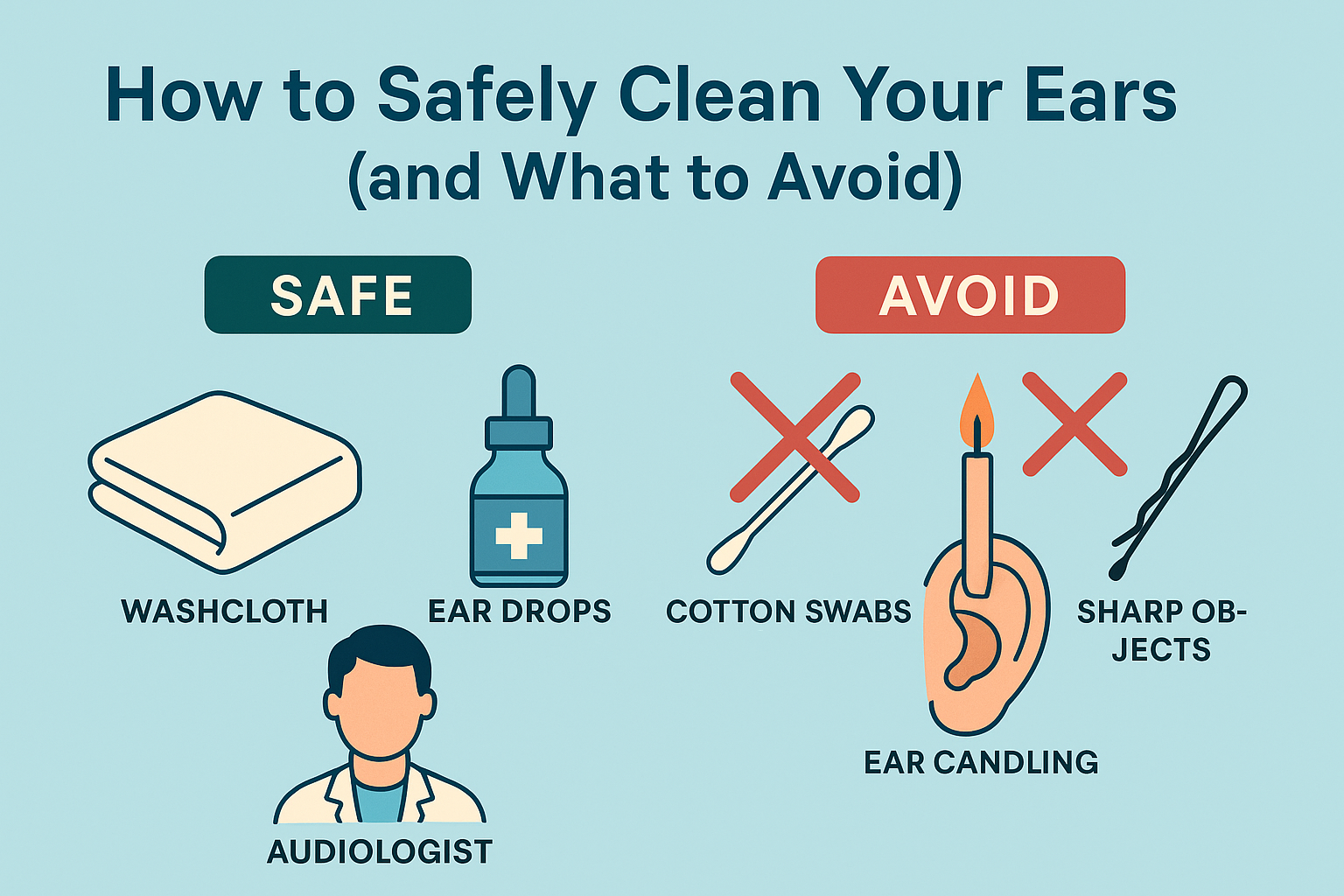Written by a clinical audiologist. Your ears usually clean themselves—this guide shows when to help, how to do it safely, and what to avoid.
Earwax Is Protective—Not “Dirty”
Earwax (cerumen) is a natural barrier that protects the ear canal by trapping dust and debris, moisturizing skin, and providing mild antimicrobial action. With everyday jaw motion (talking, chewing), wax migrates outward on its own. In most cases, you don’t need to clean inside your ears.
If you’re worried your muffled hearing might be wax, start with our primer: Earwax Buildup: Symptoms, Causes & Safe Removal. Curious about appearance and texture? See Earwax Colors Explained: What They Mean.
When Earwax Becomes a Problem
See a professional if you notice:
- Muffled hearing or a feeling of fullness
- Itching, pain, or pressure
- Ringing in the ears (tinnitus)
- Hearing aids whistling or clogging with wax
Higher risk for blockages: hearing aid wearers, older adults (drier wax), kids (narrow canals), and people with eczema or very curvy canals. If ringing began after a loud event, see Tinnitus After Loud Events: What to Do Immediately. If you suspect a straightforward wax issue, review our earwax buildup guide.
Safe Ways to Clean Your Ears
1) Wipe the Outer Ear Only
During a shower, use a warm, damp washcloth to wipe the outer ear. Never insert cloth (or anything) into the canal.
2) Soften Wax With Drops
Over-the-counter carbamide-peroxide or oil-based drops can soften wax so it works out naturally over a few days. For product types and when to choose each, see Best Earwax Removal Drops & Kits.

